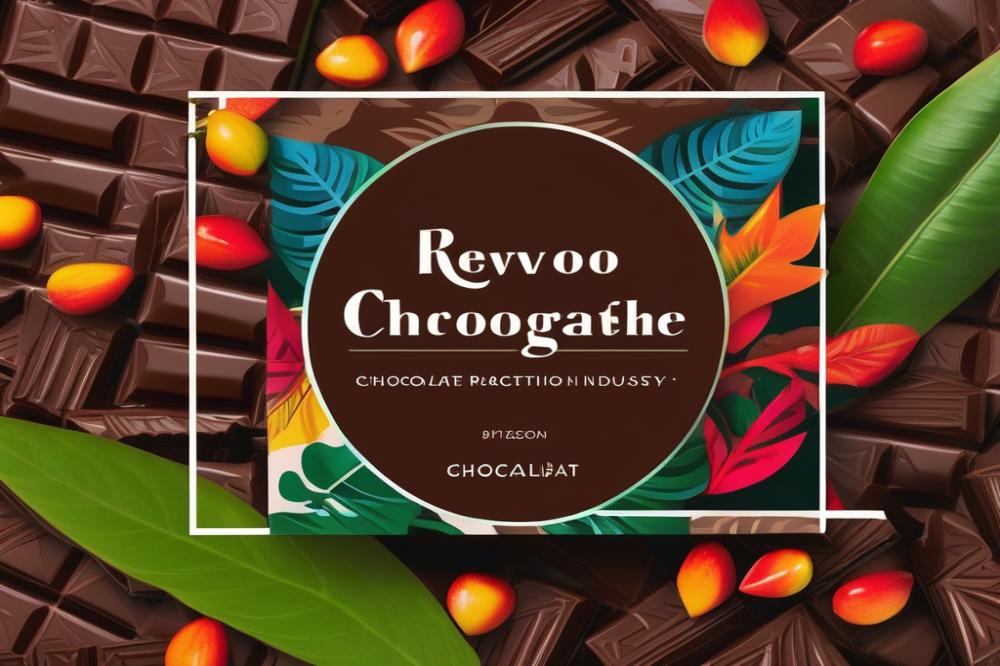Overview of the Chocolate Industry and Its Significance
The chocolate industry plays a significant role in the global economy. Millions of people worldwide enjoy chocolate every day, making it a beloved treat. cacao farming, primarily found in tropical regions, provides livelihoods for countless farmers. However, this popularity comes with serious consequences. Issues such as deforestation, child labor, and low wages are not uncommon in the industry. These problems highlight the need for better practices.
Definition of sustainable chocolate and Its Importance
sustainable chocolate refers to products made with consideration for environmental and social factors. It prioritizes ethical sourcing and promotes fair trade practices. By focusing on cocoa sustainability, companies can work toward a more responsible and equitable supply chain. Supporting sustainable options helps combat climate change and minimizes the environmental impact. Additionally, such practices support biodiversity, allowing ecosystems to thrive while providing necessary resources for future generations.
Trends and Innovations in the Industry
Recently, industry trends have shifted toward more innovative methods. Many brands are embracing organic chocolate, which is produced without synthetic pesticides and fertilizers. This change not only benefits consumers but also protects the health of the land. Agroforestry practices are gaining popularity as they promote the growth of multiple crops within a single area. This method enhances soil quality and provides farmers with diverse income sources. In addition, supply chain transparency has become crucial. Consumers are increasingly demanding information about where their chocolate comes from and how it is made. Overall, the movement toward sustainable practices is transforming the chocolate landscape, paving the way for a better future.
Understanding Sustainable Chocolate

Cocoa sustainability is becoming crucial in the chocolate industry. The way cocoa is grown impacts both the environment and communities. Many consumers are now looking for products that support ethical and eco-friendly practices. This shift is changing how chocolate is produced and marketed.
Environmental impact matters greatly. Traditional cacao farming often leads to deforestation and loss of biodiversity. Deforestation affects local ecosystems and contributes to climate change. When farmers use sustainable methods, including agroforestry, they can protect wildlife and maintain soil health. This helps the planet and supports future generations.
Organic chocolate is gaining popularity as consumers prioritize health and the environment. This type of chocolate comes from cacao farms that avoid synthetic pesticides and fertilizers. By choosing organic, buyers support farming practices that are safer for both people and wildlife.
fair trade is another important concept in this industry. It focuses on how farmers are treated and paid. Fair trade certification means that growers receive fair compensation for their work. This approach promotes social responsibility and empowers farmers, leading to stronger communities.
Supply chain transparency also plays a vital role in sustainable practices. When consumers know where their chocolate comes from, they can make informed choices. Brands that commit to clear sourcing practices are more likely to gain customer trust. This transparency helps hold producers accountable and encourages better practices throughout the industry.
Lastly, biodiversity is essential in creating resilient agricultural systems. Diverse crops can enhance the health of the soil and protect against pests. This variety is crucial for a sustainable future. Protecting biodiversity within cacao farming supports both environmental integrity and economic stability for farmers.
Cacao Farming and Agroforestry

Role of Cacao Farming in Sustainable Chocolate Production
Cacao farming plays a crucial role in the chocolate industry. It can support local communities while producing high-quality beans. Farmers who practice sustainable methods often focus on fair trade. Fair trade certification helps ensure better wages and working conditions. These practices also encourage farmers to invest in their communities. It is important for buyers to understand the environmental impact of their choices. Sustainable practices can lead to healthy soils and promote biodiversity.
Benefits of Agroforestry Systems for Biodiversity and Climate Change Mitigation
Agroforestry combines agriculture with forestry. This system promotes tree planting alongside cacao crops. One major benefit is the enhancement of biodiversity. More plant species create habitats for various wildlife. Plants play an essential role in combatting climate change. Trees absorb carbon dioxide, reducing greenhouse gases in the atmosphere. Diverse farming systems also protect against pests and diseases. Additionally, they contribute to soil health and water conservation.
Examples of Successful Sustainable Cacao Farming Initiatives
Several initiatives showcase the benefits of sustainable cacao farming. Organizations like Rainforest Alliance support farmers in implementing eco-friendly practices. Their programs help improve cocoa sustainability through education and resources. Another success story is found in the Dominican Republic. Many farmers there have adopted organic chocolate production. This transition has led to healthier ecosystems and higher profits. In Ecuador, cacao cooperatives are focused on supply chain transparency. By collaborating, farmers can sell directly to consumers, increasing fairness. These examples illustrate the potential for growth in a more responsible chocolate industry.
Organic Chocolate and Its Sustainable Practices

Organic chocolate is made from cacao that is grown without synthetic fertilizers or harmful pesticides. This practice promotes healthier farming methods. It also supports the environment by reducing pollution in the soil and water. When consumers choose organic options, they are often making a choice that benefits both their health and the planet.
In contrast, conventional chocolate production can harm the ecosystem. Many farmers use chemicals to increase yields, which can lead to soil degradation. These methods may also diminish biodiversity. Organic growers often use agroforestry, which combines trees and crops. This approach can enhance soil health and encourage biodiversity, providing habitats for various species.
Market Trends and Consumer Demand for Organic Sustainable Chocolate
The demand for organic chocolate has been growing steadily over recent years. More consumers are aware of issues related to climate change and environmental impact. They choose products that reflect their values. Fair trade has also gained traction, with consumers wanting to know how their chocolate is sourced. Ethical practices increase interest in transparent supply chains.
Studies show that shoppers are willing to pay a premium for products labeled organic or fair trade. They are concerned about social responsibility and prefer brands that support farmers and communities. Consumers recognize that sustainability in cocoa farming can lead to better livelihoods for growers. By supporting these practices, they are contributing to a more equitable chocolate industry.
In addition, the rise of social media has amplified awareness of these issues. Influencers and activists promote organic chocolate brands, making them more popular. Shoppers are increasingly looking for products that align with their beliefs in sustainability. As a result, major chocolate companies are adapting to meet this growing consumer demand.
Supply Chain Transparency in the Chocolate Industry
Supply chain transparency is critical for ethical sourcing in chocolate production. Many consumers want to know where their food comes from, especially when it involves sensitive issues like fair trade and child labor. When businesses are open about their sources and processes, they build trust with their customers. It’s not just about selling chocolate; it’s about making sure that it’s produced responsibly, protecting the environment, and supporting the farmers.
Importance of Supply Chain Transparency for Ethical Sourcing
When chocolate brands commit to being transparent, they promote social responsibility. This includes fair treatment of cacao farming communities and considerations for their workers. Certifications such as Fair Trade help create fair wages and better conditions for farmers. Additionally, this transparency can reduce the environmental impact of cocoa sustainability practices. Consumers appreciate knowing that their choice supports a system that values both people and nature.
Innovations in Tracking and Verifying Sustainable Practices
Recent advancements in technology aid brands looking to enhance their supply chain transparency. Blockchain technology, for instance, provides a secure way to track cocoa from farm to factory. Such innovations help verify claims about organic chocolate and other sustainable practices. By using these systems, companies can show proof of their commitment to ethical sourcing. This could drastically change how consumers perceive and select chocolates, creating a ripple effect across the industry.
Case Studies of Brands Leading in Supply Chain Transparency
Several chocolate brands are paving the way for others by prioritizing transparency. One brand has implemented an agroforestry program that encourages biodiversity while ensuring farmers have reliable incomes. Another company offers detailed reports on their sourcing and actively involves farmers in decision-making processes. These brands are not just selling a product; they are championing a movement towards greater accountability. Their efforts exemplify how transparent practices can address climate change and support local communities.
Challenges and Solutions Facing Sustainable Practices
Sustainability in the chocolate industry faces several obstacles. Cacao farming often relies on harmful agricultural practices. Many farmers struggle with low wages, which hampers social responsibility. The environmental impact of traditional farming methods leads to deforestation and loss of biodiversity. Climate change also poses a serious threat. Rising temperatures and erratic weather can affect cocoa yield. These issues directly influence both the industry and the small-scale farmers who grow cocoa beans.
Innovative Solutions and Initiatives
Several initiatives aim to tackle these challenges. Fair trade certifications help improve farmers’ incomes and empower local communities. Programs promoting agroforestry integrate tree planting with cacao farming. These methods enhance biodiversity and improve soil health. Many companies are now producing organic chocolate. This shift reduces chemical use, making farming practices safer for the environment. Supply chain transparency has become increasingly important. Consumers want to know where their chocolate comes from and how it is made.
Collaboration Among Stakeholders
Collaboration is key for effective change. Different stakeholders must work together to create lasting solutions. Farmers, chocolate manufacturers, and consumers all play a role. Initiatives involving partnerships between these groups have proven to be successful. Organizations are bringing education and resources to farmers. This approach helps them adapt to climate change and implement sustainable practices. By promoting cocoa sustainability, the industry can evolve into a more responsible model. Improved communication can lead to better understanding and cooperation.
Ultimately, the chocolate industry must prioritize a future that respects both people and the planet. The path to sustainability may be rocky, but with commitment and innovation, change is possible.
Final Thoughts and Looking Ahead
Importance of Sustainable Practices in the Chocolate Industry
Many people love chocolate, but it’s essential to remember where it comes from. Cacao farming has deep roots in cultures around the world. However, unchecked practices can harm the environment and the farmers themselves. Sustainable practices play a crucial role in protecting ecosystems and supporting communities. They help chocolate producers create a product that is not only rich in flavor but also kind to the Earth. By choosing brands that prioritize ethical sourcing, consumers can make a significant impact.
Future Trends and Innovations in Chocolate
Looking ahead, trends show an increase in sustainable innovations within the industry. More companies are adopting fair trade standards, ensuring that farmers receive fair compensation. Advances in technology may also improve farming techniques. Methods such as agroforestry can provide more sustainable yields. Another exciting prospect is the rise of plant-based chocolates, offering alternatives that appeal to a broader audience. These shifts reflect a growing awareness around environmental issues and social responsibility.
Call to Action for Everyone
Every choice matters. Consumers have the power to support sustainable methods by purchasing chocolate brands that care for the planet and their people. Producers should be encouraged to invest in responsible practices that uplift farmers and protect ecosystems. Supporting this movement can lead to a chocolate industry that flourishes while respecting the Earth. Together, everyone can contribute to a more sustainable future, one delicious bite at a time.



